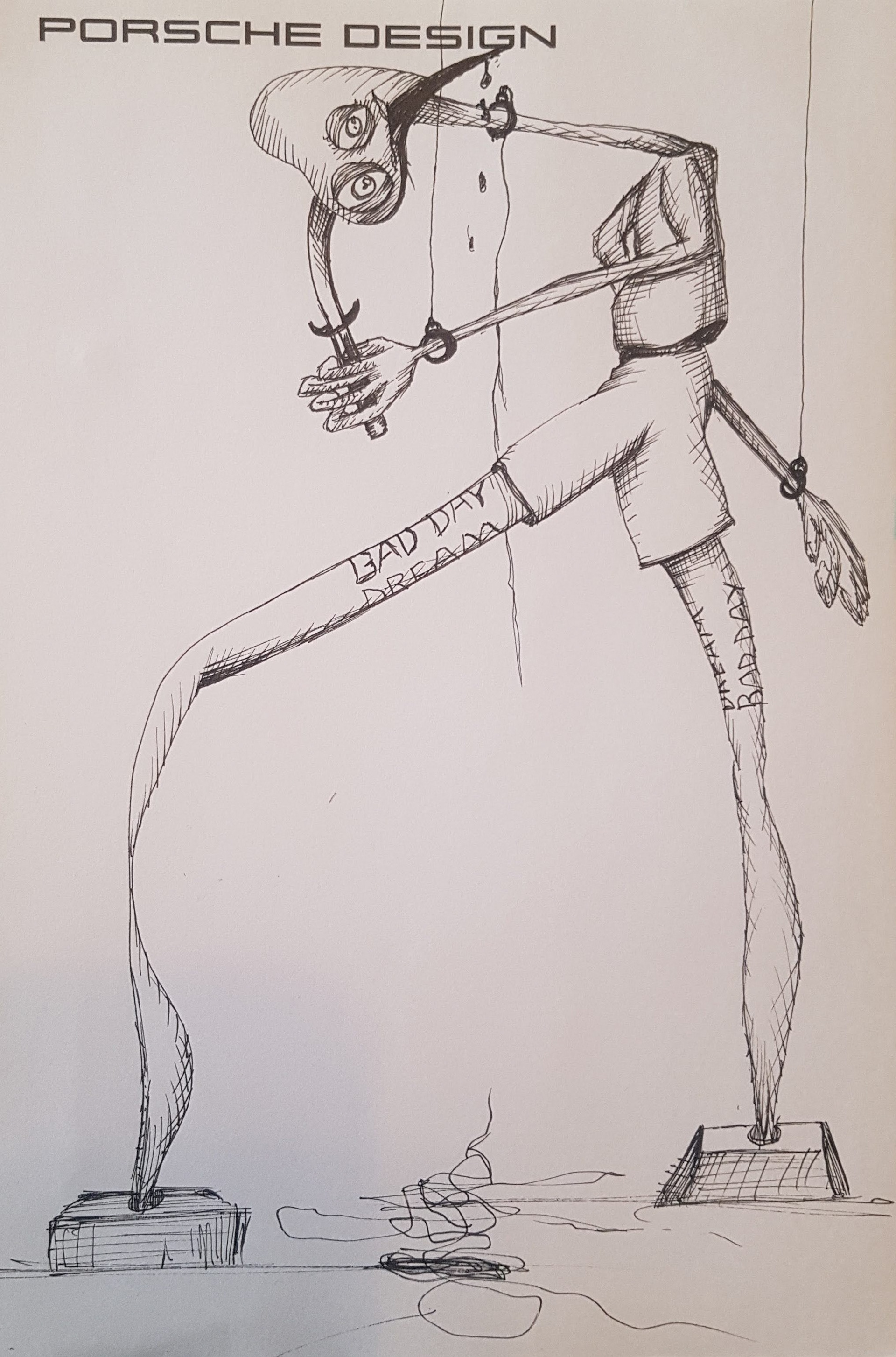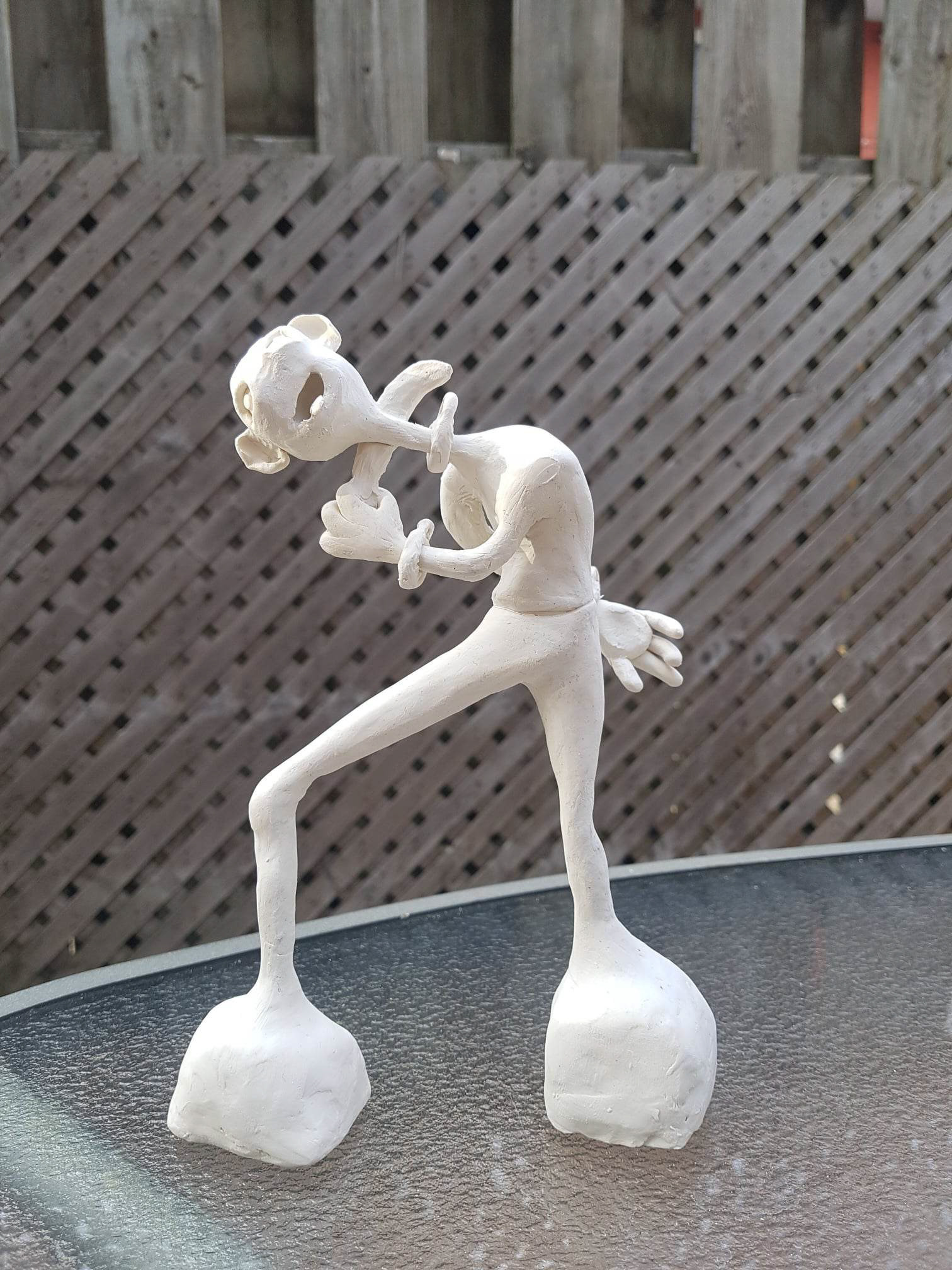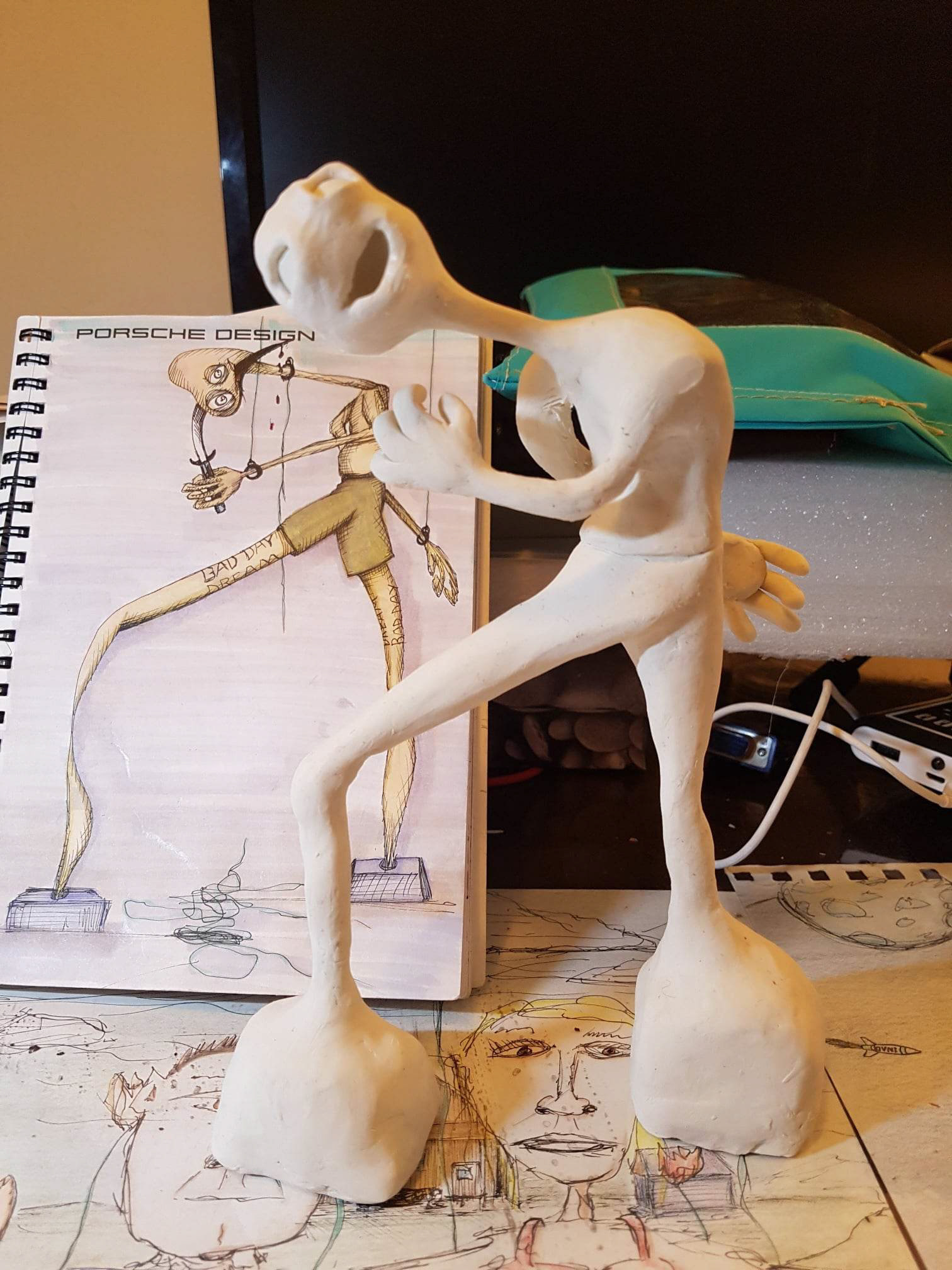Freed, Stabbed questions the blurred boundary between freedom and responsibility. This puppet, sculpted at the very moment it escapes its strings, finds itself alone — free, perhaps, but deeply vulnerable. Its newly acquired autonomy turns against it: the knife it once held becomes the unwitting instrument of its own downfall.
The work explores the paradox of freedom without awareness, of a brutal emancipation devoid of preparation or clarity. By severing the ties that once guided it, the puppet does not attain control — it loses its balance. It does not rise — it falls.
Through this figure frozen in the instant of its undoing, Freed, Stabbed invites us to reflect on our own relationship with control, the illusion of independence, and the quiet cost of self-determination turning into self-destruction. The character’s fragile, almost grotesque form amplifies the existential vertigo: what remains when the strings fall and we are left to wield, alone, the tool of our own fate?
A puppet escapes its strings — free at last, but unprepared. Still clutching the knife it once held as a prop, it now faces the fatal weight of autonomy.
Freed, Stabbed explores the fragile boundary between freedom and control, and the quiet collapse that can follow unexamined liberation.
Frozen in the moment of self-inflicted harm, the figure invites reflection on the illusions of independence, and the unsettling question:
what remains when no one is left to hold the strings?
Freed, Stabbed explores the fragile boundary between freedom and control, and the quiet collapse that can follow unexamined liberation.
Frozen in the moment of self-inflicted harm, the figure invites reflection on the illusions of independence, and the unsettling question:
what remains when no one is left to hold the strings?


